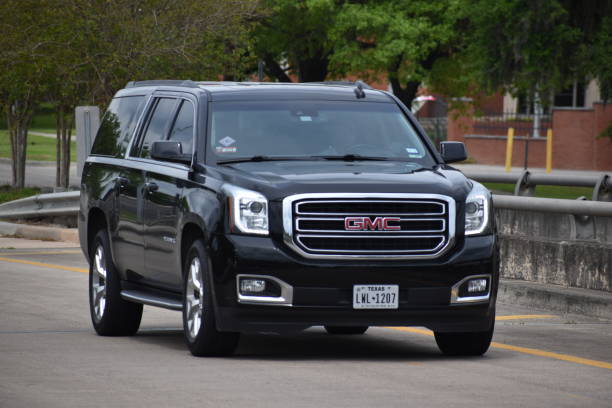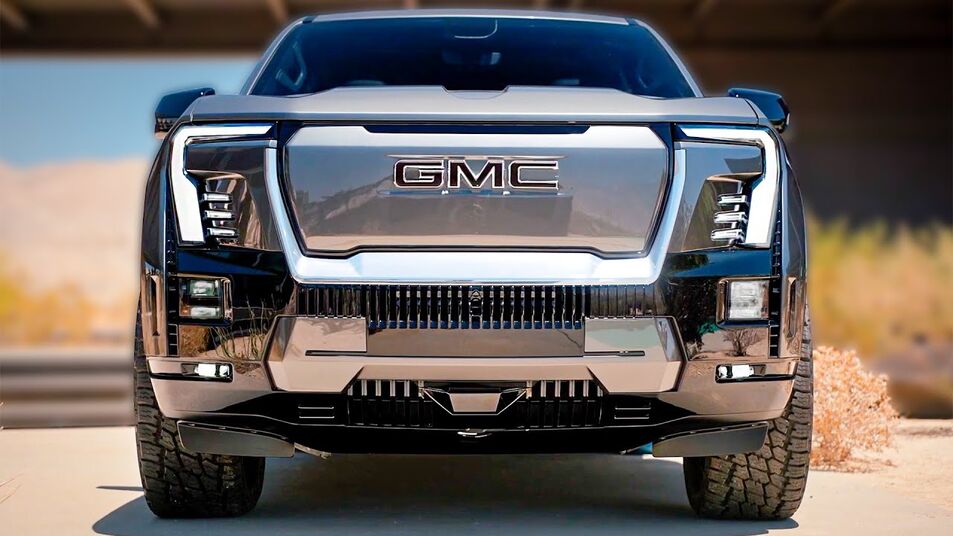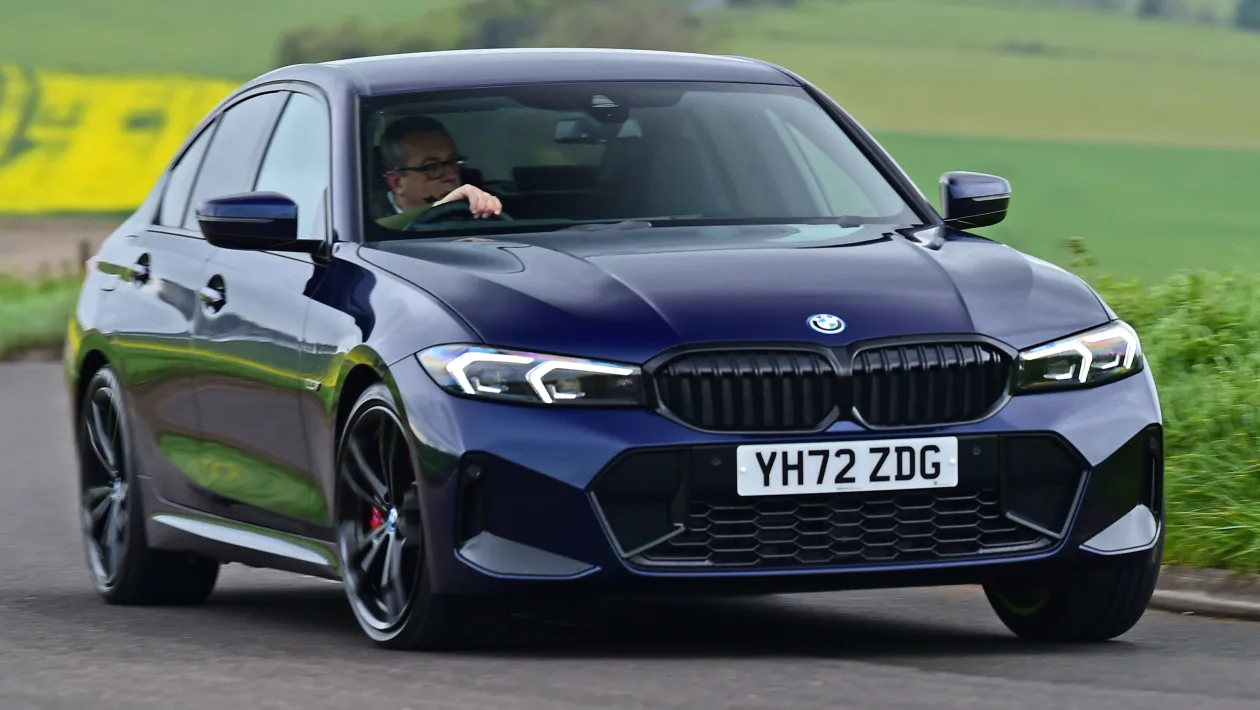Introduction
Ever spotted those bold red letters “GMC” on the grille of a powerful truck and wondered what they actually stand for? You’re not alone! These three letters represent one of America’s most enduring automotive brands, a titan in the truck and SUV market that’s been hauling America’s goods and families for well over a century.
Today, GMC stands tall as General Motors’ premium truck division, offering rugged yet refined vehicles that blend capability with comfort. From construction sites to country clubs, GMC vehicles have earned their place in American culture as symbols of dependability and strength.
In this deep dive, we’re going to unpack not just what those three famous letters stand for, but also the fascinating journey behind the brand that’s become synonymous with professional grade trucks and SUVs. Ready to discover the story behind those iconic red letters? Let’s hit the road!
What GMC Stands For
Let’s cut right to the chase – GMC stands for General Motors Company (or sometimes cited as General Motors Corporation). Simple enough, right? Well, actually, there’s more to this story!
What many folks don’t realize is that GMC wasn’t always part of the General Motors family. The brand’s original name was actually the “Grabowsky Motor Company,” founded by brothers Max and Morris Grabowsky way back in 1901. Surprised? Most people are!
After General Motors acquired the company in 1908, the GMC acronym was retained but redefined to align with its new parent company. This evolution from Grabowsky to General Motors created some lasting confusion about the exact wording behind the acronym.
Even today, you might hear some car enthusiasts debate whether the “C” stands for “Company” or “Corporation” – both have been used in official documentation over the decades. The official stance today refers to “General Motors Company,” but honestly, either interpretation gets the GMC point across.
Isn’t it fascinating how this iconic automotive acronym GMC has maintained its identity through multiple corporate iterations? That’s the kind of brand recognition most companies can only dream about! Want to know more, visit our website…
History of GMC
The GMC story begins in Detroit (where else?) in 1901, when brothers Max and Morris Grabowsky established the “Rapid Motor Vehicle Company” – the true predecessor to what we now know as GMC. Their first vehicle? A rugged one-cylinder truck designed for commercial use – humble beginnings for what would become an American icon.
By 1909, General Motors had acquired Rapid Motor Vehicle Company along with Reliance Motor Car Company, merging them in 1911 to form GMC Truck. Talk about perfect timing – America was industrializing rapidly, and these sturdy trucks were exactly what growing businesses needed.
Did you know that GMC made history during World War I by providing nearly 9,000 trucks for the war effort? According to press reports from the era, these vehicles proved so reliable that the U.S. military continued their relationship with GMC through WWII, with the company producing over 600,000 military vehicles including the famous “Duck” amphibious vehicle.
The post-war boom years saw GMC firmly establish itself as a major player in America’s growing love affair with automobiles. The 1950s and 60s brought us iconic models like the GMC Suburban and the revolutionary 1959 GMC pickup trucks with their distinctive styling.
Throughout the 70s and 80s, while many American automakers struggled with the energy crisis and foreign competition, GMC continued refining its truck lineup. By the 1990s, consumer preferences began shifting toward personal-use trucks and SUVs – a market GMC was perfectly positioned to serve.
According to industry statistics, GMC’s strategic positioning helped it weather economic downturns better than many competitors. Even during the 2008 automotive industry crisis, when parent company General Motors restructured, GMC was retained as one of the core brands due to its strong sales performance and loyal customer base.
How’s that for resilience? From humble beginnings with the Grabowsky brothers to surviving multiple economic upheavals, GMC has demonstrated remarkable staying power in an industry known for dramatic rises and falls.
GMC’s Identity in General Motors’ Brand Portfolio

So where exactly does GMC fit within the larger General Motors family? Good question! Think of General Motors as a parent with several children – each with their own distinct personality. There’s Chevrolet (the accessible, mainstream brand), Buick (the comfort-focused near-luxury option), Cadillac (the full luxury experience), and then there’s GMC – the professional-grade truck and SUV specialist.
What makes GMC special in this lineup? While Chevrolet also offers trucks and SUVs, GMC positions itself as the more premium option without quite reaching Cadillac’s luxury pricing. According to automotive industry analysts, GMC vehicles typically command prices 8-15% higher than their Chevrolet counterparts, despite often sharing similar mechanical platforms.
“GMC has successfully carved out its niche as the brand for discerning truck buyers who want added refinement without the full luxury price tag,” noted automotive journalist Aaron Robinson in a 2023 industry report.
One of the most interesting aspects of GMC’s position in the GM portfolio is what industry insiders call “badge engineering” – the practice of creating different brands from largely similar vehicles. Take the GMC Sierra and Chevrolet Silverado, for example. They share many mechanical components, but GMC offers more upscale interior materials, distinctive styling cues, and often more standard features.
But does this strategy really work? The numbers suggest it does! According to sales figures published by Automotive News, many GMC models maintain healthy sales volumes despite their premium pricing compared to Chevrolet equivalents. This suggests that consumers do perceive real value in the GMC brand identity.
You might wonder: “If they’re so similar underneath, why bother having both brands?” It’s a fair question! The strategy allows General Motors to capture different market segments and consumer preferences without developing entirely different vehicles from the ground up. Smart business move, wouldn’t you say?
What’s particularly remarkable about GMC is how it’s maintained its distinct identity focused exclusively on trucks and SUVs. Unlike many automotive brands that offer a full range of vehicles from small cars to large trucks, GMC has stayed true to its roots as a truck specialist. In today’s market where many brands try to be all things to all people, there’s something refreshingly focused about GMC’s approach.
GMC’s Most Iconic Vehicles
Let’s talk about the stars of the GMC lineup – the vehicles that have made this brand a household name across America. Ever noticed how some trucks just seem to command respect on the road? That’s the GMC effect!
The Sierra lineup has been GMC’s bread and butter for decades. First introduced in 1987 (though GMC trucks existed long before with different names), the Sierra has evolved from a basic work truck to today’s technological powerhouse. The 2024 Sierra boasts impressive stats – with its top-tier 6.2L V8 engine pumping out 420 horsepower and up to 13,000 pounds of towing capacity. Not too shabby, right?
According to J.D. Power’s 2023 Vehicle Dependability Study, GMC Sierra models ranked above average in long-term reliability – a factor that has helped build the fierce loyalty among Sierra owners. As one Sierra owner told Trucks.com, “I’m on my fourth Sierra. When something works this well for your lifestyle, why change?”
Then there’s the Yukon – GMC’s answer to the full-size SUV question. First appearing in 1992 as a two-door version of the Jimmy, the Yukon has grown into a family-hauling legend. The latest Yukon Denali Ultimate trim (GMC’s ultra-premium offering) starts north of $90,000 – a price point that would have been unthinkable for a GMC product just 20 years ago. But boy, does it deliver with features like Super Cruise hands-free driving technology and a 16-way power massage seat!
For those who don’t need quite that much vehicle, GMC’s crossover lineup – the compact Terrain and midsize Acadia – offer the brand’s signature styling and quality in more manageable packages. Did you know the Terrain was GMC’s first-ever compact SUV when it debuted in 2009? Talk about GMC branching out!
Looking back at GMC’s history, we can’t forget classics like the GMC Syclone – a limited-production performance pickup from 1991 that could outrun sports cars of its era. With a 0-60 time of just 4.3 seconds (faster than a Ferrari 348!), this truck became an instant legend. Only 2,995 were ever made, and today they command collector prices upwards of $50,000 – about five times their original sticker price!
And how can we not mention the GMC Hummer EV? Yep, you read that right – GMC brought back the Hummer name, but with an electrifying twist! This monster of an electric truck boasts 1,000 horsepower, a 0-60 time of just 3 seconds (in WTF mode – which officially stands for “Watts To Freedom,” wink wink), and an estimated range of 329 miles. Car and Driver called it “the most outrageous electric vehicle yet,” and I’m inclined to agree! With a starting price around $110,000 for the Edition 1 model, it’s certainly not for everyone, but it represents GMC’s bold vision for an electric future.
What’s your favorite GMC model? Whether you’re a Sierra devotee or you’ve got your eye on that new electric Hummer, there’s something undeniably special about GMC vehicles that keeps fans coming back for more.
GMC Today: Innovation and Future Direction
Where is GMC headed these days? In an automotive world increasingly focused on electrification and technology, GMC isn’t just keeping up – in many ways, they’re leading the charge (pun absolutely intended).
GMC’s current market position remains strong, with the brand consistently ranking in the top 15 for U.S. vehicle sales. According to data from Automotive News, GMC sold approximately 509,000 vehicles in 2023, with the Sierra accounting for nearly 40% of those sales. Not bad for a brand that only offers trucks and SUVs!
The big buzz around GMC lately has been their ambitious push into electrification. The GMC Hummer EV pickup made waves when it was announced in 2020, followed by the Hummer EV SUV variant. But GMC isn’t stopping there – the electric Sierra Denali is on its way, promising to bring GMC’s electric revolution to its core truck lineup.
“GMC’s approach to electrification isn’t about compromise – it’s about enhancing what people already love about trucks and SUVs,” explained Duncan Aldred, Global Vice President of Buick and GMC, in a 2023 press conference. “More capability, more performance, and yes, more luxury.”
The technology in today’s GMC vehicles would blow the minds of those early Grabowsky brothers. Features like the MultiPro tailgate with six different configurations, the CarbonPro carbon fiber composite bed, and the transparent trailer view camera system have revolutionized what truck buyers expect from their vehicles. Have you seen the Super Cruise hands-free driving system in action? It’s literally changing how people experience long road trips!
GMC’s sustainability efforts extend beyond just electric powertrains. The company has committed to carbon neutrality by 2040, with interim targets for reducing water consumption and waste at manufacturing facilities. According to GM’s Sustainability Report, their Lansing Delta Township Assembly plant (which produces GMC vehicles) is now landfill-free, recycling or reusing 96% of waste materials.
What I find most impressive about GMC’s current direction is how they’ve managed to embrace innovation while maintaining their core identity. They’re not trying to reinvent themselves as something they’re not – they’re taking what GMC has always stood for (professional-grade capability) and evolving it for a new era. Isn’t that exactly what a heritage brand should do?
FAQs About GMC

Is GMC the same as General Motors?
Nope! This is a common mix-up. GMC is a division or brand under the larger General Motors (GM) corporation, similar to how Chevrolet, Buick, and Cadillac are also GM brands. While GMC stands for General Motors Company now, they’re not the same entity. Think of GM as the parent company and GMC as one of its children – related but distinct!
What’s the difference between GMC and Chevrolet trucks?
Great question! While GMC trucks and their Chevrolet counterparts often share platforms, engines, and many mechanical components, there are notable differences. GMC vehicles typically offer more premium features, more upscale interiors, and distinctive styling. The price difference? According to Kelley Blue Book data, GMC models generally command 8-15% higher prices than their Chevy equivalents.
Consumer Reports surveys suggest GMC buyers tend to prioritize features and comfort more than Chevrolet buyers, who often focus more on value and utility. As one GMC dealer told Automotive News, “GMC customers often don’t even cross-shop with Chevy – they’re looking for something more premium from the start.”
Why choose GMC over other truck brands?
GMC has carved out a unique position in the market – more premium than mainstream brands like Ford, Ram, or Chevrolet, but not quite as expensive as luxury brands. Many GMC owners cite the “professional-grade” engineering, distinctive styling, and premium features without the flashiness (or price tag) of a luxury brand.
According to a 2023 Brand Loyalty Study by IHS Markit, GMC enjoys one of the highest repeat buyer rates in the industry at approximately 39% – meaning nearly 4 out of 10 GMC buyers purchase another GMC when it’s time for a new vehicle. That’s pretty impressive customer loyalty!
Are GMC vehicles considered luxury vehicles?
It’s complicated! GMC occupies what marketers call the “premium” space – a step above mainstream but not quite full luxury. However, their top-tier Denali and Denali Ultimate trims definitely push into luxury territory with prices to match. A fully-loaded 2024 Yukon Denali Ultimate costs over $95,000 – firmly in luxury vehicle territory!
According to Edmunds’ market analysis, about 60% of all GMC Yukons sold are Denali trims, suggesting many buyers do indeed view GMC as a luxury option. As automotive journalist Dan Neil wrote in the Wall Street Journal, “The Denali sub-brand has become GMC’s secret weapon, delivering luxury-car profits from trucks.”
What was GMC’s first vehicle?
The very first vehicle produced by the Grabowsky brothers (before the GMC name was established) was a single-cylinder, chain-driven truck built in 1902. Once officially under the GMC banner, their first lineup in 1912 consisted of seven different truck models ranging from 1/2-ton to 5-ton capacity.
A fascinating bit of trivia: according to GM Heritage Center archives, GMC’s 1912 electric truck had a range of 75 miles – not too far off from some modern electric vehicles! Some ideas really do come full circle, don’t they?
Conclusion
So there you have it – GMC stands for General Motors Company today, though it began as Grabowsky Motor Company over a century ago. More than just three letters, GMC represents an American automotive tradition rooted in capability, dependability, and increasingly, premium features.
From humble beginnings with the Grabowsky brothers’ one-cylinder truck to today’s tech-laden Sierra Denali and revolutionary Hummer EV, GMC has continuously evolved while maintaining its identity as a maker of professional-grade trucks and SUVs. The brand has weathered economic storms, changing consumer preferences, and technological revolutions – emerging stronger with each challenge.
What’s next for GMC? If current trends continue, we’ll likely see further electrification across the lineup, even more advanced technology integration, and a continued push upmarket with premium features. According to industry analysts at AutoPacific, GMC is positioned to capture an increasing share of the profitable premium truck and SUV market, potentially growing by 15% over the next five years.
Whether you’re a longtime GMC owner or just someone curious about what those three bold letters stand for, I hope this deep dive has given you a new appreciation for one of America’s most enduring automotive brands. The next time you see that distinctive red GMC badge on the road, you’ll know there’s over 120 years of American automotive history behind it.
What do you think about GMC’s direction? Are you excited about their electric future, or do you prefer their traditional trucks? Share your thoughts in the comments below!






